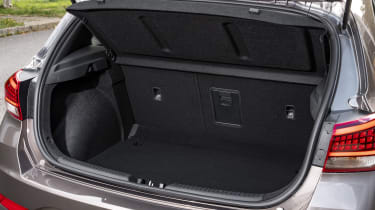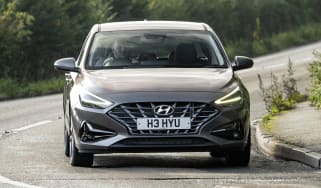Hyundai i30 hatchback - Practicality & boot space
The large boot makes up for the rear seats in Hyundai i30, which are a little on the tight side
If you’re buying the Hyundai i30 with the intention of using it as your primary family transport, how happy you are with it may depend on the size of your children. While front-seat passengers get plenty of room, rear-seat space could be better.
Younger children will have no problem getting comfortable in the rear, but taller teenagers will feel hard done by, as headroom is a little on the tight side; anyone over six foot tall is likely to struggle back there. In fairness, the same can be said of the Ford Focus, so this shortcoming shouldn’t necessarily put you off buying the i30. If back-seat space is a priority, though, do investigate the Skoda Octavia: it’s a far larger car in the rear.
Hyundai i30 interior space & storage
There are plenty of internal cubbies in the i30. The front door bins are supplemented by another storage area under the central armrest, while the glovebox is a reasonable size. Years ago, an ashtray would have sat below the heating and ventilation controls, but modern preferences mean this has morphed into a further resting place for loose items.
Boot space
We’ve no complaints about the i30’s boot: it’s large, well shaped and the split-folding seats lie almost flat when dropped. While the Volkswagen Golf has a 380-litre boot, the i30’s boot boasts 395 litres of storage, rising to 1,301 litres when the seats are folded.
Those after maximum carrying capacity are again advised to seek out the Skoda Octavia: even in hatchback guise, this has a massive 600-litre boot. Other big-booted hatchbacks include the Peugeot 308 and Honda Civic.
Towing
The 1.0-litre i30 with the dual-clutch automatic has the lowest towing limit of 700kg for a braked trailer, while the manual 1.0-litre and both variants of the 1.5 are rated for 1,000kg. The discontinued 1.6-litre diesel has the highest limit of 1,500kg – enough to tow a medium-sized caravan.














